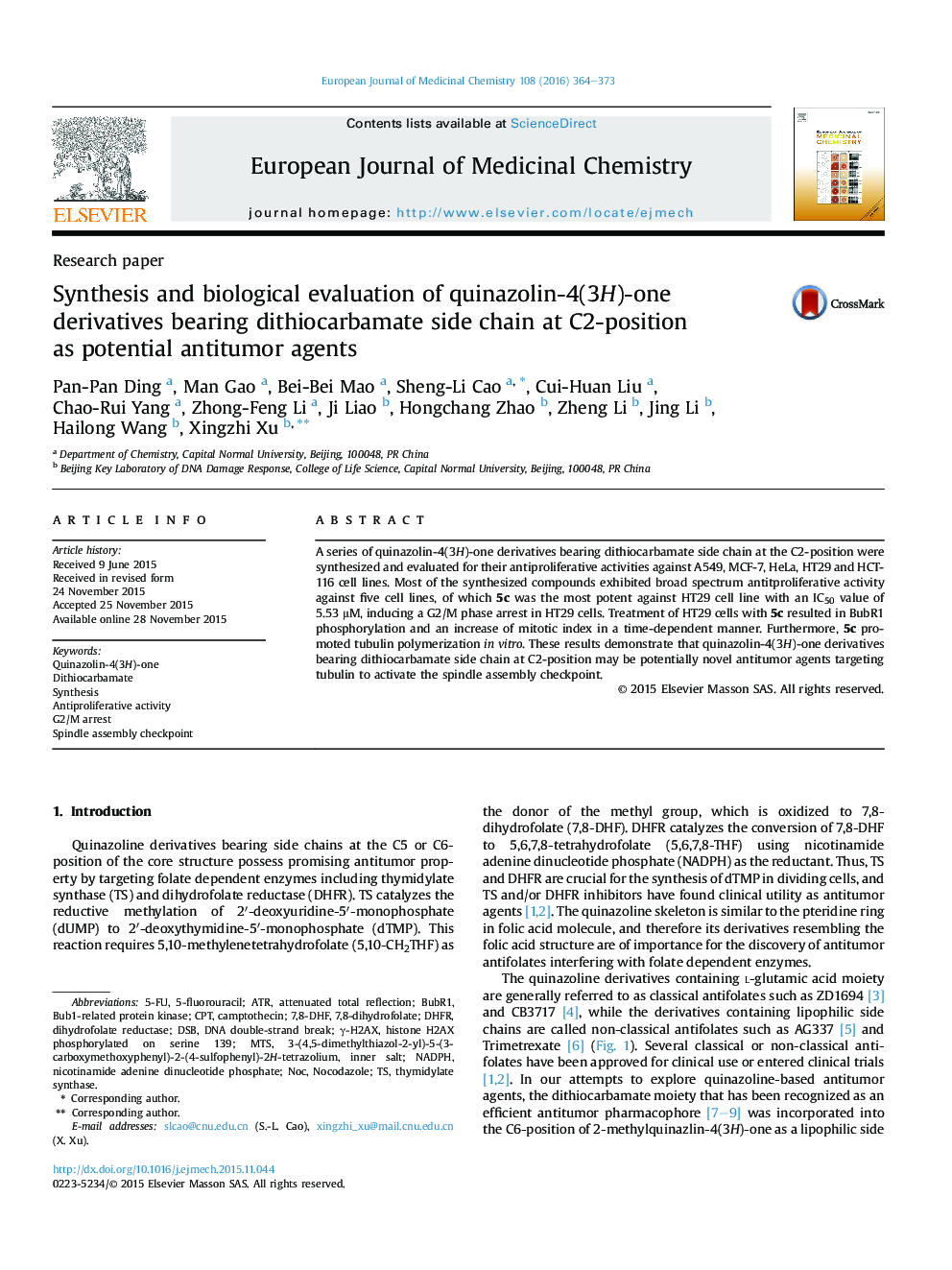| Article ID | Journal | Published Year | Pages | File Type |
|---|---|---|---|---|
| 1393858 | European Journal of Medicinal Chemistry | 2016 | 10 Pages |
•Twenty dithiocarbamate derivatives of quinazolin-4(3H)-one were synthesized.•Antiproliferative activities of 5a−t against five cancer cell lines were evaluated.•Compound 5c induced a G2/M arrest in HT29 cells.•5c promoted tubulin polymerization and activated the spindle assembly checkpoint.
A series of quinazolin-4(3H)-one derivatives bearing dithiocarbamate side chain at the C2-position were synthesized and evaluated for their antiproliferative activities against A549, MCF-7, HeLa, HT29 and HCT-116 cell lines. Most of the synthesized compounds exhibited broad spectrum antitproliferative activity against five cell lines, of which 5c was the most potent against HT29 cell line with an IC50 value of 5.53 μM, inducing a G2/M phase arrest in HT29 cells. Treatment of HT29 cells with 5c resulted in BubR1 phosphorylation and an increase of mitotic index in a time-dependent manner. Furthermore, 5c promoted tubulin polymerization in vitro. These results demonstrate that quinazolin-4(3H)-one derivatives bearing dithiocarbamate side chain at C2-position may be potentially novel antitumor agents targeting tubulin to activate the spindle assembly checkpoint.
Graphical abstractCompounds 5a−t were synthesized and evaluated as antitumor agents. Among them, 5c inhibited the proliferation of HT29 cells by interfering with tubulin, leading to a cell cycle arrest at G2/M phase.Figure optionsDownload full-size imageDownload as PowerPoint slide
